
Eccentric Isometrics – How and Why to Implement This Method for Ridiculous Strength Gains
By Jacob James
Eccentric Isometrics have the ability improve your power, strength, stability, movement efficiency and much more.
 Eccentric Isometrics (EI’s) have a hugely beneficial and relevant carryover of key performance attributes to combat athletes. EI’s in one way or another have been a staple in training programmes for decades, from Olympic weightlifting to bodybuilding. Strength coaches have been utilizing these methods under different named umbrellas with great success.
Eccentric Isometrics (EI’s) have a hugely beneficial and relevant carryover of key performance attributes to combat athletes. EI’s in one way or another have been a staple in training programmes for decades, from Olympic weightlifting to bodybuilding. Strength coaches have been utilizing these methods under different named umbrellas with great success.
Most prevalent and at the forefront of EI’s has been Dr Joel Seedman of Advanced Human Performance. Joel has immensely and thoroughly bought to light about the advantages of utilising EI’s within a systematic and methodic approach to strength and performance training. In fact, he has the most resources on the subject, including a 10-year-in-the-making book (and his doctoral dissertation) which outlines the subject in great detail - so be sure to check him out here.
Eccentric Isometrics - Synopsis
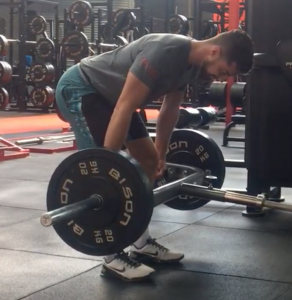 EI’s are not a new training method. As aforementioned they have been effectively used for decades across disciplines with great yielding results. To break things down to a digestible definition, essentially we are looking at performing a movement whereby the eccentric portion of the lift is lowered in a controlled manner, holding the bottom of that position before completing the actual lifting phase of the movement. Below, I break down multiple benefits to performing EI’s in general, with specific carry over to combat athletes, as well as practical applications you can implement right away.
EI’s are not a new training method. As aforementioned they have been effectively used for decades across disciplines with great yielding results. To break things down to a digestible definition, essentially we are looking at performing a movement whereby the eccentric portion of the lift is lowered in a controlled manner, holding the bottom of that position before completing the actual lifting phase of the movement. Below, I break down multiple benefits to performing EI’s in general, with specific carry over to combat athletes, as well as practical applications you can implement right away.
Enhanced Power, Stability, Strength & Movement Efficiency
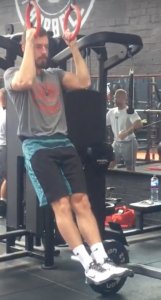 Without shadow of a doubt, EI’s are a surefire way to turbocharge your training, clean up your movement patterns and pack some serious power into your shots. One of the mechanisms behind the success of EI’s come down to their ability to increase post activation potentiation - the all important process of priming your CNS for strength training thus allowing the athlete to yield a greater training effect from their dedicated S&C Session. Another importance of EI’s is that of better sensory feedback and an increase in proprioreception - essentially tidying up body mechanics, body positioning, improving motor control and neural firing patterns, all of which allow for a greater training effect. Furthermore from this, left-right imbalances are addressed when utilising EI’s in a unilateral (one-sided) format. Lastly, muscle stiffness and EI’s go hand in hand. In lay-mans muscle stiffness is a sought after attribute for its ability to produce insane amounts of power. Due to the controlled nature of the lowering phase, the pausing and holds at the bottom position (so long as proper body mechanics are attained) the athlete can express increased movement velocity.
Without shadow of a doubt, EI’s are a surefire way to turbocharge your training, clean up your movement patterns and pack some serious power into your shots. One of the mechanisms behind the success of EI’s come down to their ability to increase post activation potentiation - the all important process of priming your CNS for strength training thus allowing the athlete to yield a greater training effect from their dedicated S&C Session. Another importance of EI’s is that of better sensory feedback and an increase in proprioreception - essentially tidying up body mechanics, body positioning, improving motor control and neural firing patterns, all of which allow for a greater training effect. Furthermore from this, left-right imbalances are addressed when utilising EI’s in a unilateral (one-sided) format. Lastly, muscle stiffness and EI’s go hand in hand. In lay-mans muscle stiffness is a sought after attribute for its ability to produce insane amounts of power. Due to the controlled nature of the lowering phase, the pausing and holds at the bottom position (so long as proper body mechanics are attained) the athlete can express increased movement velocity.
Modify & Master Technique & Form
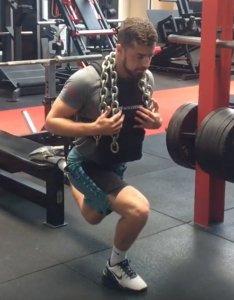 When it comes to ‘corrective exercises’ (a term dubbed by strength coaches and personal trainers to try and remedy poor body mechanics by using special exercises) - there is nothing more corrective than correct movement, period. EI’s allow the athlete to really hone in on and dial their technique to near mastery by reinforcing correct movement patterns, again largely due to the control nature and natural pauses associated with EI’s.
When it comes to ‘corrective exercises’ (a term dubbed by strength coaches and personal trainers to try and remedy poor body mechanics by using special exercises) - there is nothing more corrective than correct movement, period. EI’s allow the athlete to really hone in on and dial their technique to near mastery by reinforcing correct movement patterns, again largely due to the control nature and natural pauses associated with EI’s.
Facilitates Immense Force Absorption Capabilities
Teaching your body to move efficiently and utilising the most biomechanically accurate positions whilst running EI protocols will in-turn fine tune your body to dealing with eccentric forces as well as increasing your ability to absorb high impact force as efficiently as possible. Any strength and conditioning programme for building athleticism and any multi dimensional and multi directional sports that we are involved with in the combat realm, should systemically and periodically place emphasis on the athletes ability to increase their efficiency at absorbing force. EI’s are a great tool to implement to profit from these benefits.
Optimal Range of Motion
There is a lot more to the implementation of EI’s than simply holding the deepest position you can find, but instead allowing the athlete to produce their most natural range of motion whilst staying as sound and tight as possible. This will lead to a biomechanically sound range of motion which will adhere much better with the athlete and thus produce a longer term greater training effect without a long list of side-effect like symptoms of overtraining.
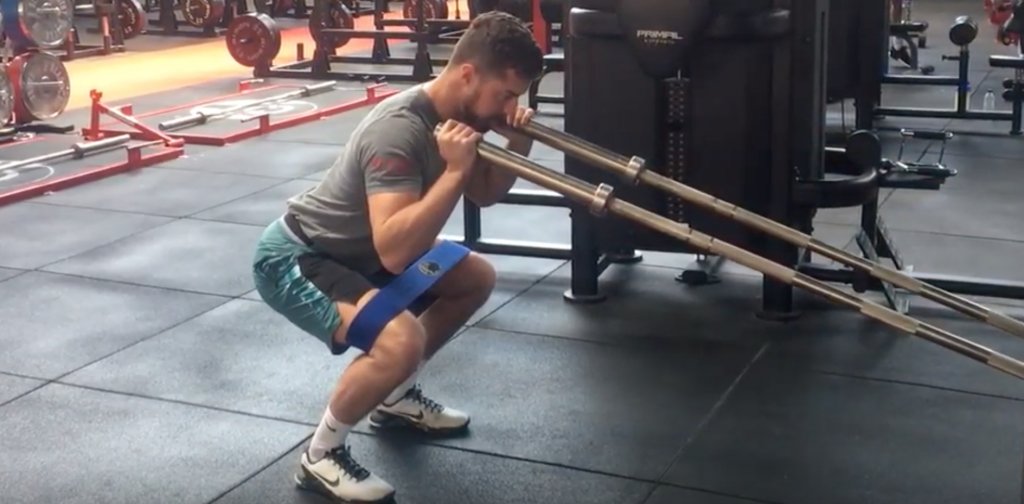
Practical Application
Okay, so how to we go about implementing EI’s into a training programme? EI’s are a useful protocol for a vast majority of movements. In order to obtain your most bang-for-buck however, movements involving a significant stretch and muscle lengthening are deemed to be most effective. Here are a few examples. Any squat variation (such as a Zercher squat), hinge variation (such as an RDL), pull variation (such as a single arm lat pull down) and press variation (such as a DB overhead press) are all staples. Feel free to allow creativity to flow - experiment and see what’s effective. Bilateral and unilaterally based movements are equally as a effective as one another however, unilateral movements (single limb i.e. single leg RDL) tend to cater better for those with poor biomechanics when it comes to bilateral movements and make for amazing correct movement patterns.
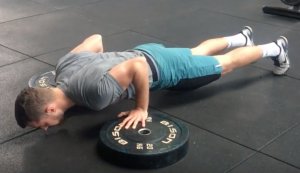 Movement wise therefore, you can’t really go wrong. Sure there’s always going to be a good / better / best scenario given your athletes variables and training outcome desires but its pretty foolproof. How about rep ranges and tempos? Given that there are significant changes in repetition pace than what might already be considered ‘normal’ it's generally recommended and in best practice to perform movements in the 1-6 rep range. The time under tension will yield quality over quantity all day long, here. The eccentrics should be lowered for between 3-6 seconds with the isometric being held for between 2-7 seconds. Any less than this and you’ll negate any benefits from pausing the lengthened position and any longer than this will add to fatigue accumulation, again negating the intended positive outcomes we are looking for. When it comes to intensity, this is completely tailored to the individual - essentially start conservative and adjust as needed until your moving the weight at the given tempo for the given reps and being an 8 RPE (simply meaning you should finish the set with in theory another 2 left in the tank) which should be increased when overloaded over time as part of a systematic training programme. Heres an example of how EI’s should be interpreted:
Movement wise therefore, you can’t really go wrong. Sure there’s always going to be a good / better / best scenario given your athletes variables and training outcome desires but its pretty foolproof. How about rep ranges and tempos? Given that there are significant changes in repetition pace than what might already be considered ‘normal’ it's generally recommended and in best practice to perform movements in the 1-6 rep range. The time under tension will yield quality over quantity all day long, here. The eccentrics should be lowered for between 3-6 seconds with the isometric being held for between 2-7 seconds. Any less than this and you’ll negate any benefits from pausing the lengthened position and any longer than this will add to fatigue accumulation, again negating the intended positive outcomes we are looking for. When it comes to intensity, this is completely tailored to the individual - essentially start conservative and adjust as needed until your moving the weight at the given tempo for the given reps and being an 8 RPE (simply meaning you should finish the set with in theory another 2 left in the tank) which should be increased when overloaded over time as part of a systematic training programme. Heres an example of how EI’s should be interpreted:
Barbell Zercher Good Morning @ 53X1
5 3 X 1 - This is how you should write your desired tempos and this is how to interpret them:
5 - The duration of the eccentric portion of the lift
3 - The duration of the isometric hold
X - The concentric, ‘lifting part’ means as fast as good form allows
1 - The duration of rest at the “top” or “rest” portion of the lift
Can they be used in camp? Absolutely - EI’s are equally as effective in season/camp as they are outside of camp/ off season. Due to the quality of the reps, the sound movement mechanics built, the negation of inflammation etc. EI’s are a solid choice all round.
Summary Of Key Points
- EI’s improve your power, strength, stability and movement efficiency
- Performing controlled eccentrics and pausing at your biomechanical end-range yields for fantastic benefits across performance and longevity indicators
- Correct up your movement patterns and mobility issues with EI’s
- Teach yourself proper force absorption and efficiency
- Use across a whole host of bilateral and unilateral exercises… year round
Lower for between 3-6 seconds, hold for between 2-7 seconds and fill the rest of the tempo in as efficiently as form allows
Final Words & Video Examples
Whether your a wrestler, MMA fighter, a blue belt or just someone that likes to workout, the addition of EI’s into your training protocol will allow you to yield so much from your training sessions, making them highly effective and turning you into a battle-ready beast. Once you start to notice the changes, I can assure you that EI’s will remain a staple in your training for decades to come. Cheers to that!
Here are some video examples of EI’s used in action.
Landmine Squat
Push Up
Landmine Hinge
RFESS
Ring Pull Ups




